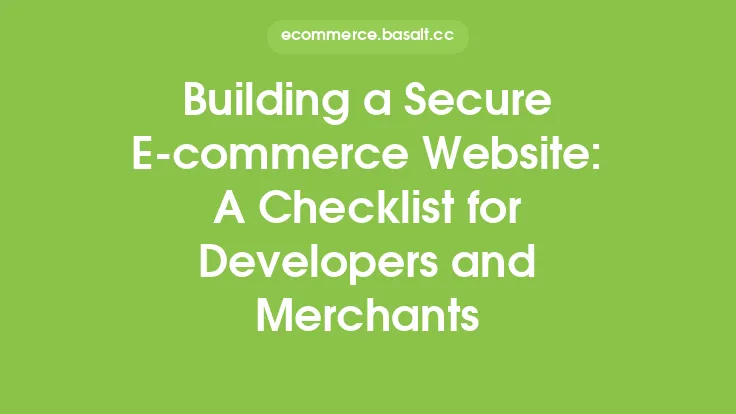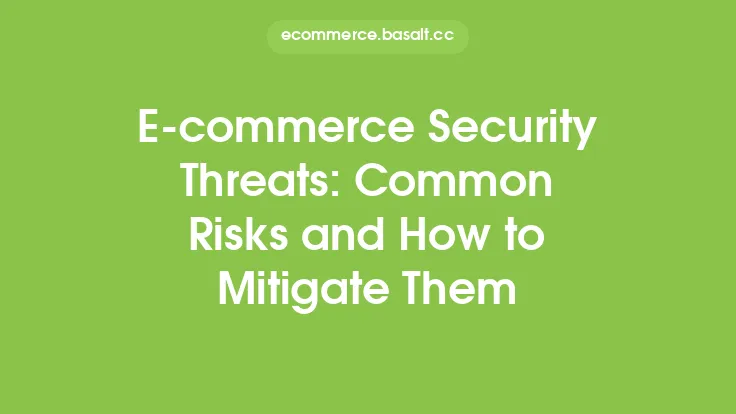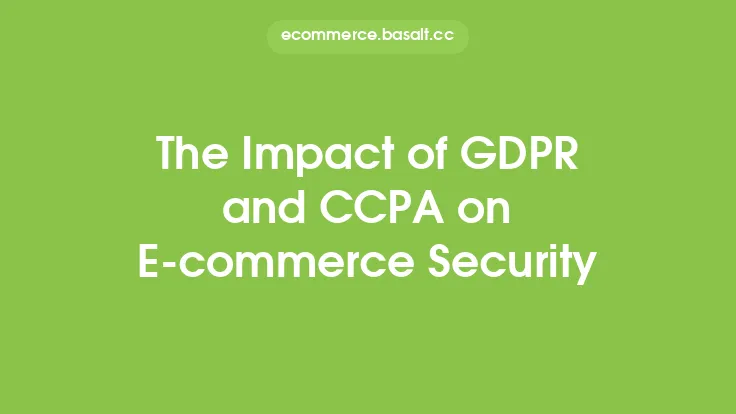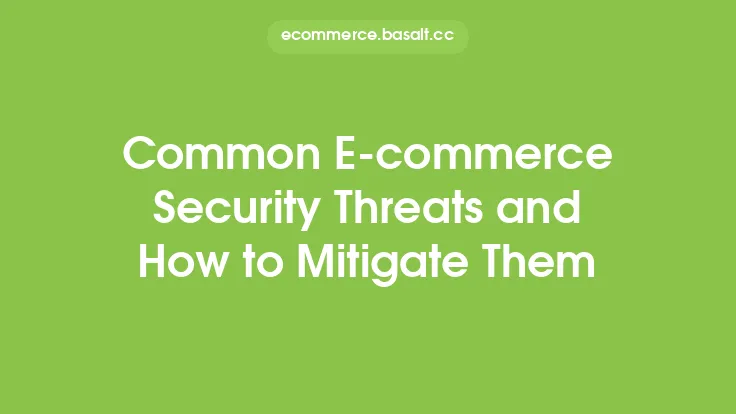As the e-commerce industry continues to grow and evolve, the importance of security audits cannot be overstated. A security audit is a comprehensive review of an e-commerce website's security posture, designed to identify vulnerabilities and weaknesses that could be exploited by malicious actors. In this article, we will delve into the world of e-commerce security audits, exploring the benefits, best practices, and key considerations for identifying vulnerabilities and improving protection.
What is an E-commerce Security Audit?
An e-commerce security audit is a systematic evaluation of an online store's security controls, policies, and procedures. The primary goal of a security audit is to identify potential security risks and vulnerabilities, and provide recommendations for remediation and mitigation. A thorough security audit will examine various aspects of an e-commerce website, including network security, application security, data storage, and user authentication. By identifying and addressing potential security weaknesses, e-commerce businesses can reduce the risk of data breaches, cyber attacks, and other security incidents.
Benefits of E-commerce Security Audits
Regular security audits are essential for e-commerce businesses, as they provide numerous benefits, including:
- Identification of vulnerabilities and weaknesses, allowing for prompt remediation and mitigation
- Improved compliance with industry regulations and standards, such as PCI DSS and GDPR
- Enhanced protection of sensitive customer data, reducing the risk of data breaches and cyber attacks
- Increased customer trust and confidence, as a result of demonstrated commitment to security and compliance
- Reduced risk of financial losses, reputational damage, and legal liabilities associated with security incidents
Types of E-commerce Security Audits
There are several types of security audits that e-commerce businesses can conduct, including:
- Network security audits, which examine the security of a website's network infrastructure, including firewalls, routers, and switches
- Application security audits, which evaluate the security of an e-commerce website's application code, including vulnerabilities and weaknesses in software and plugins
- Data storage audits, which assess the security of sensitive customer data, including credit card numbers, personal identifiable information, and other sensitive data
- User authentication audits, which examine the security of user authentication mechanisms, including password storage, authentication protocols, and session management
Conducting an E-commerce Security Audit
Conducting a comprehensive security audit requires a structured approach, involving several key steps, including:
- Planning and preparation, including defining the scope and objectives of the audit
- Data collection, including gathering information about the website's security controls, policies, and procedures
- Vulnerability scanning, using automated tools to identify potential vulnerabilities and weaknesses
- Manual testing, including penetration testing and code reviews, to validate findings and identify additional vulnerabilities
- Reporting and remediation, including providing recommendations for remediation and mitigation of identified vulnerabilities and weaknesses
Best Practices for E-commerce Security Audits
To ensure the effectiveness of an e-commerce security audit, several best practices should be followed, including:
- Regularly scheduling security audits, to ensure ongoing security and compliance
- Engaging independent security auditors, to provide an objective and unbiased assessment
- Using automated tools, to streamline the audit process and improve efficiency
- Implementing a risk-based approach, to prioritize remediation and mitigation efforts
- Continuously monitoring and evaluating security controls, to ensure ongoing security and compliance
Common E-commerce Security Vulnerabilities
E-commerce websites are vulnerable to a range of security threats, including:
- SQL injection attacks, which involve injecting malicious code into a website's database
- Cross-site scripting (XSS) attacks, which involve injecting malicious code into a website's application code
- Cross-site request forgery (CSRF) attacks, which involve tricking users into performing unintended actions
- Password cracking, which involves using automated tools to guess or crack user passwords
- Data breaches, which involve unauthorized access to sensitive customer data
Tools and Techniques for E-commerce Security Audits
Several tools and techniques are available to support e-commerce security audits, including:
- Vulnerability scanners, such as Nessus and OpenVAS, which automate the process of identifying potential vulnerabilities
- Penetration testing tools, such as Metasploit and Burp Suite, which simulate real-world attacks to validate findings
- Code review tools, such as CodeSonar and Veracode, which examine application code for vulnerabilities and weaknesses
- Compliance scanning tools, such as PCI DSS and GDPR compliance scanners, which evaluate compliance with industry regulations and standards
Conclusion
E-commerce security audits are a critical component of an e-commerce business's security and compliance program. By regularly conducting comprehensive security audits, e-commerce businesses can identify vulnerabilities and weaknesses, improve protection, and reduce the risk of security incidents. By following best practices, using automated tools, and engaging independent security auditors, e-commerce businesses can ensure the effectiveness of their security audits and maintain the trust and confidence of their customers.





